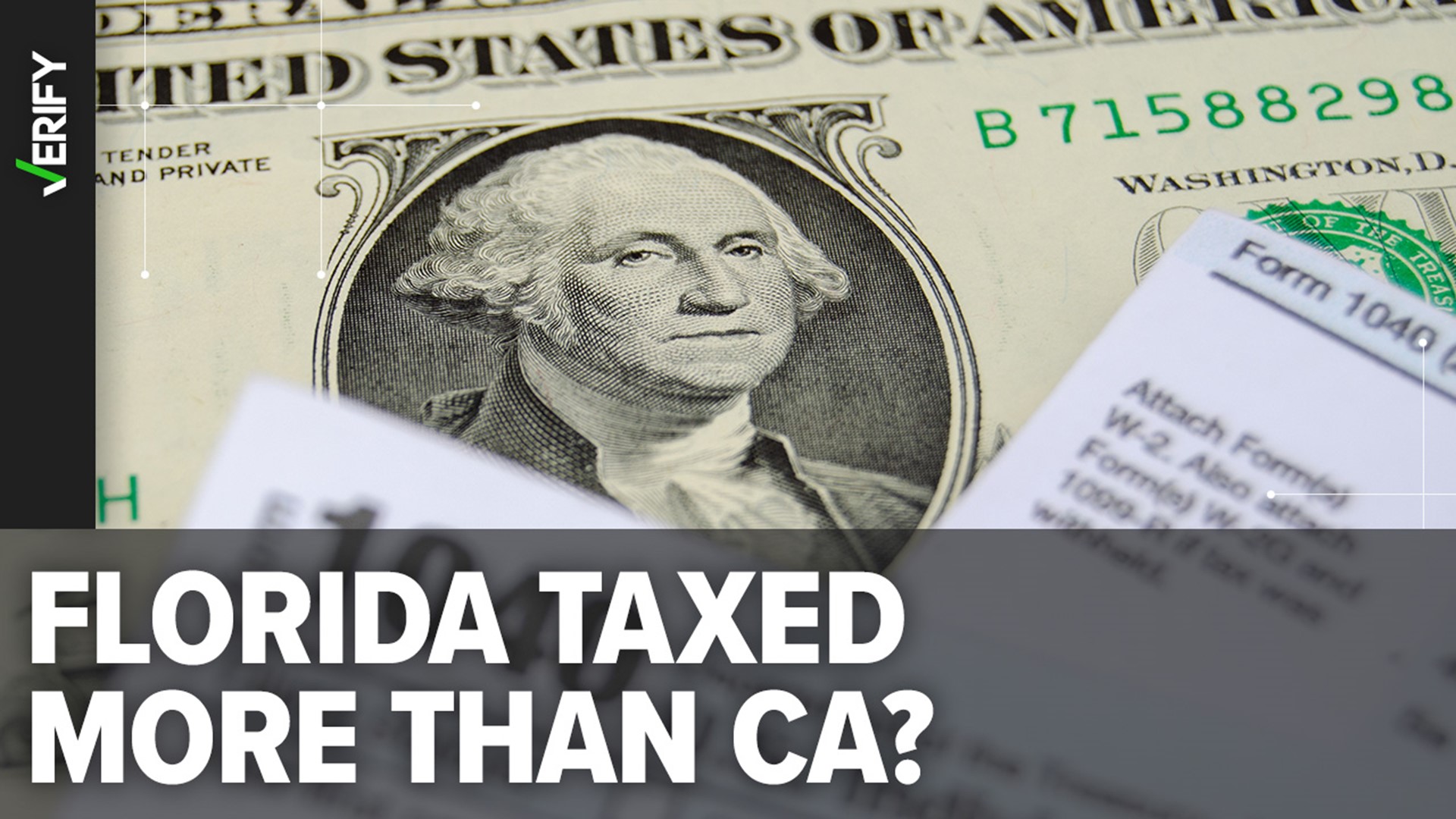Gov. Gavin Newsom (D-Calif.) took aim at recent debate opponent Gov. Ron DeSantis’s state of Florida in a recent interview, claiming California’s tax system is friendlier to the working class than theirs is.
Although California is known for having generally high taxes, Newsom argued they’re generally directed at richer Californians, while taxes in Florida disproportionately affect poorer taxpayers.
“Substantively, Florida taxes low-wage workers… more than we tax millionaires and billionaires,” Newsom said in the interview clip, which he posted online and which has more than a million views.
THE QUESTION
Does Florida tax low-income people more than California taxes millionaires?
THE SOURCES
THE ANSWER
One analysis determined that in Florida the poorest 20% of families pay 12.7% of their income in state taxes, while in California the richest 1% of families pay 12.4%. As with all studies, the analysis has limitations and individual realities may vary.
WHAT WE FOUND
Florida does not have a state income tax, while California does. However, both states have property and sales taxes. While such taxes generally have a flat rate and can appear to affect all taxpayers equally, as a percentage of total income they affect poorer taxpayers more than richer ones.
Newsom’s claim is based on a study that aimed to incorporate that principle into an assessment of how large a tax burden people of different income brackets face in different states. The analysis was conducted by the Institute on Taxation and Economic Policy, a progressive-leaning think tank.
The study found that in Florida, even without an income tax, the bottom 20% of income-earners paid the state an estimated 12.7% of their total income in sales and property taxes. Meanwhile the top 1% of earners paid Florida just 2.3% of their income.
There were similar findings in Texas, another large Republican-led state Newsom singled out in his interview. Texas also does not have an income tax, but the study estimated the poorest families pay 13% of their income in state sales and property tax. The top 1% pay just 3.1% per the analysis.
However, in California the figures are somewhat reversed. The bottom 20% of earners pay 10.5% of their income in income, sales, and property taxes, compared to 12.4% for families in the top 1%. That’s primarily because California has a progressive income tax, which means the tax rate continues to rise as income does.
These metrics support Newsom’s claim that low-wage Floridians pay a higher percentage of their income in taxes than do high-income Californians.
But it’s important to note the claims are based on this singular study, not a direct comparison of individual tax rates. And as with any study, the ITEP analysis has limitations and assumptions baked in.
For instance, the researchers used federal consumer data to estimate how much a typical family in each income bracket spends on certain goods. In reality, the amount of sales tax paid could vary.
The analysis also omitted senior taxpayers because frequently much of their income is from tax-exempt sources such as Social Security.
When assessing the effect of property tax, the study made an estimate of how much that tax is passed on to renters by landlords in the form of higher rent.
The study also used 2018 tax codes. In a statement to VERIFY, the researchers said that in the five years since, they have not identified any changes in states’ tax codes that would significantly alter their findings.
Other analyses of total tax burden by state have been conducted with different methodology. WalletHub and the conservative-leaning Tax Foundation found that on average, California has a higher average tax burden than Florida or Texas. However, these analyses do not differentiate by income level. That means, for instance, that California’s high income taxes on the highest earners bring up its overall average.
None of the studies aim to assess differences in overall cost of living in the various states, or in wages.












